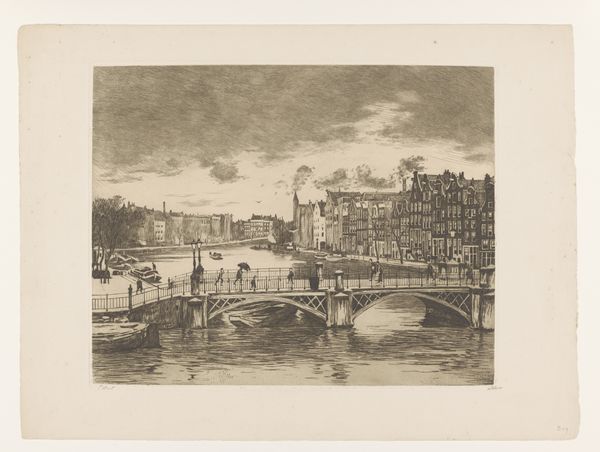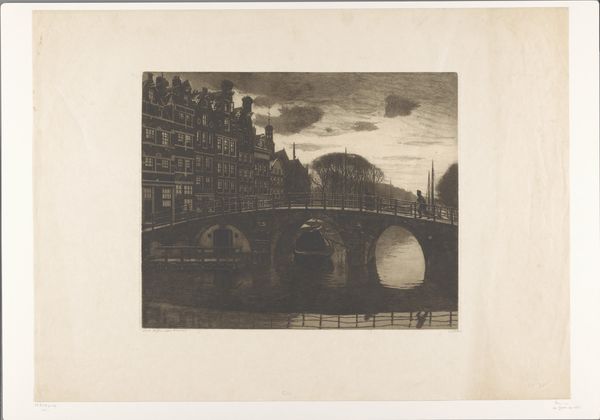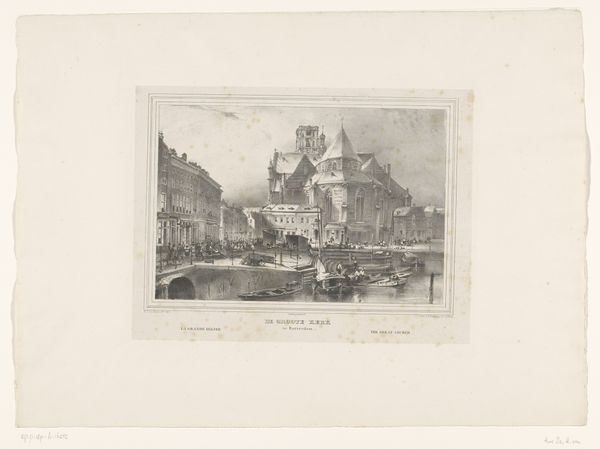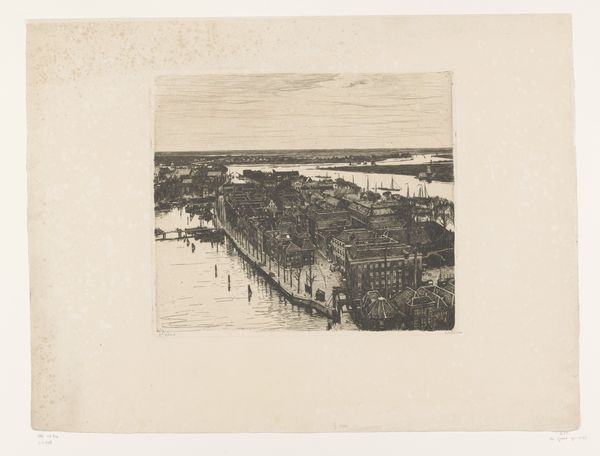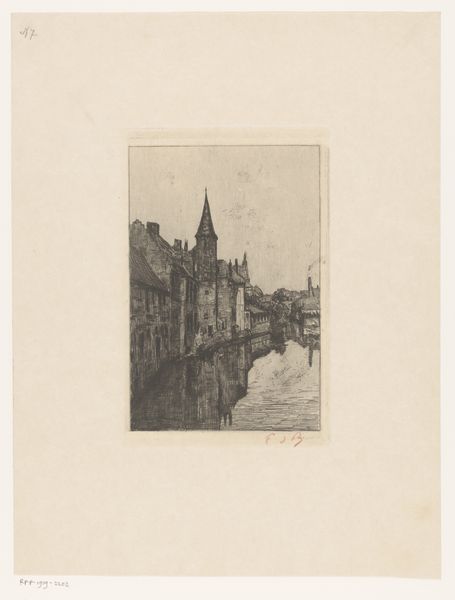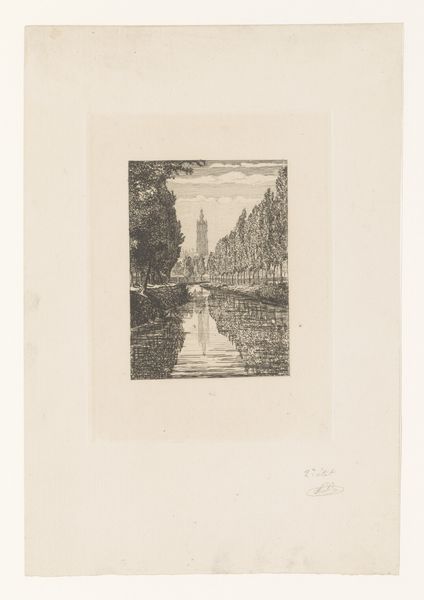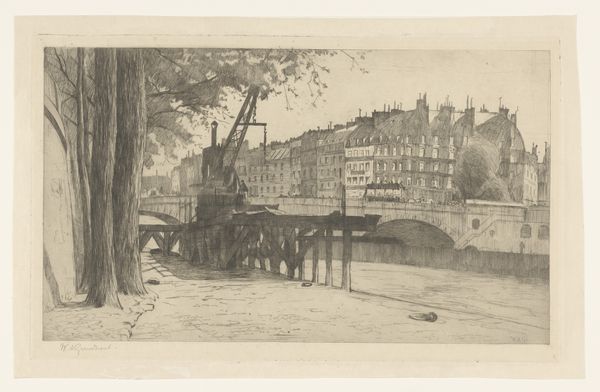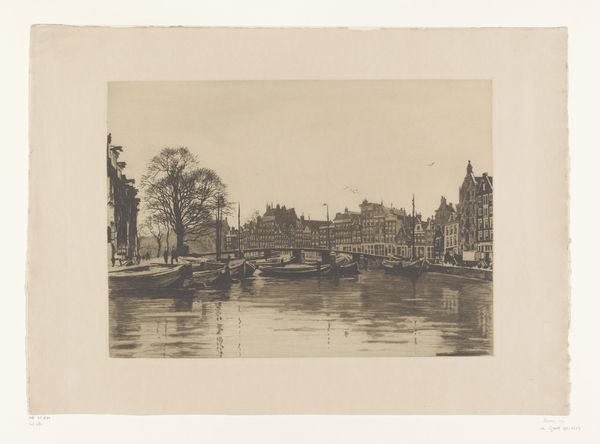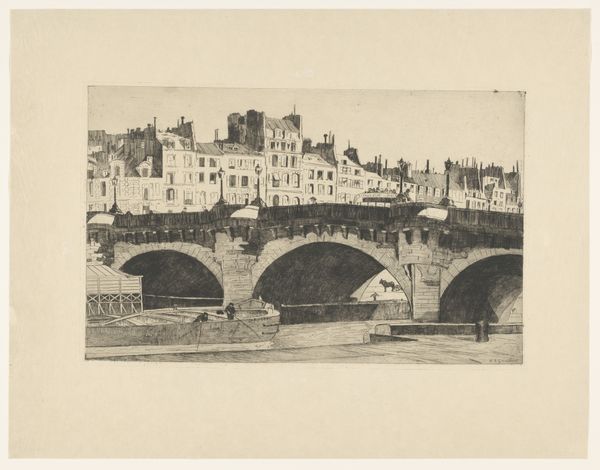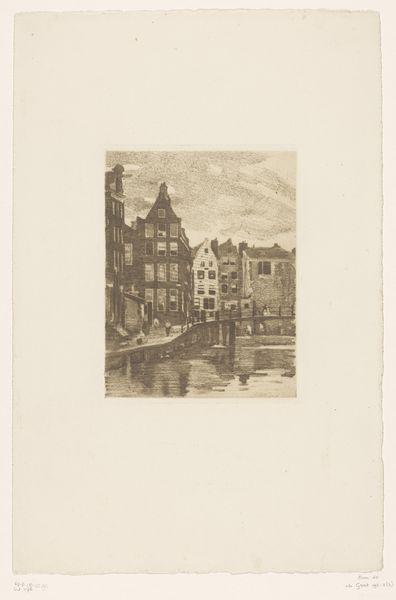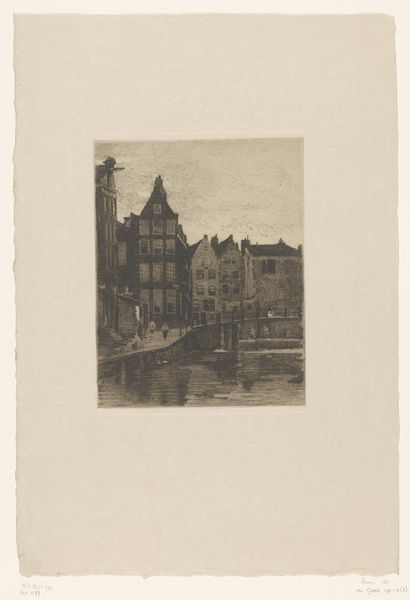
Dimensions: height 128 mm, width 224 mm
Copyright: Rijks Museum: Open Domain
Editor: Here we have Willem Witsen's "Gezicht op grachtenhuizen in Amsterdam," an etching from around 1915-1919, currently held at the Rijksmuseum. I'm immediately drawn to the way the artist captured the reflections in the water, creating this soft, almost hazy atmosphere. What catches your eye in this piece? Curator: The composition immediately impresses. Witsen employs a sophisticated understanding of linear perspective to guide the viewer's gaze. Notice how the receding lines of the canal and buildings converge toward a vanishing point, creating a sense of depth and spatial organization. Do you see how the artist emphasizes certain details in the architecture while subtly suggesting others, allowing our eyes to actively participate in constructing the scene? Editor: Yes, I see how the sharper lines in the foreground sort of fade out as the buildings recede, almost blurring at the edges. Curator: Precisely. Consider the role of light and shadow in structuring the image. Witsen skillfully uses variations in tone and value to define forms and create contrast. Observe, for example, how the light reflecting off the water animates the lower portion of the composition, whereas the darker tones delineate the architectural elements above. It's all about formal relationships—how lines, shapes, light, and dark interact to create a cohesive whole. Editor: So, rather than just a literal depiction of Amsterdam, it’s more about the formal elements creating a sense of space and atmosphere? Curator: Precisely. The artist is clearly manipulating elements to highlight geometric structures and use tonal value, not necessarily for hyper-realism, but to elicit more fundamental relationships between the viewer and art object. Editor: I see, focusing on those relationships, makes the composition more than just a landscape. Thank you for highlighting that. Curator: Indeed, it's a powerful example of how close observation and formal analysis can unlock new insights into a work of art.
Comments
No comments
Be the first to comment and join the conversation on the ultimate creative platform.

